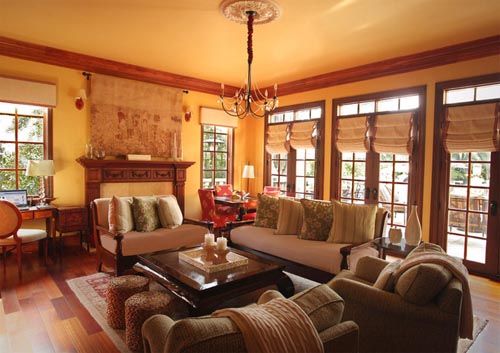The relationship between light and mood is one that most people can figure out by just putting two and two together. In short, dark and dim colours creat low atmospheres, while bright colours can brighten up the mood in a room. However, there is much more to it, and what’s more, is that many of us do not even take these basic rules into consideration when designing the interior of their homes. Here are a few lighting tips and ways you can light up your home.
Buy Fixtures Yourself
It is always best to buy lighting fixtures yourself, in order to avoid being overcharged by builders or electricians. There are tons of stores online such as lampcommerce.com that provide quality lighting at affordable prices.
The Lounge
Your lounge should be a demonstration of how to use accent lighting to full effect. You should highlight parts of the house you cherish or things such as ornaments, pictures, books and plants. By doing so, you emphasize and draw attention to these things, and make a statement through them.

A key thing to remember when designing your lounge’s lighting is to leave yourself a great deal of room for flexibility. The layout of your living room will most probably constantly change over the years and so; you should take that into consideration when arranging your lighting. For example, it wouldn’t make much sense to place recessed down-lighters above items of furniture as you may very well wish to move your furniture around in the future.
If you want a good illumination level, then you might want to try using wall washers – but only if you have the right colour shade on your walls, as the reflected light from wall washers will be tinted by your wall’s colour.
The Kitchen
You want your kitchen to be as bright as possible – especially since you’ll be using knives there. Start by a central pendant light. This will give your kitchen great general lighting. Then compliment that by adding task lighting above the cooker, worktops, sink and fridge.
Many kitchen pieces come with their own built-in illumination. If you’re buying a new kitchen, it will be a wise choice to choose cupboards that have built-in lights that turn on and off when the door is used. Cooker hoods can also come with illumination.
The bathroom
The bathroom is arguably the room that requires the most delicate lighting scheme. You want it to be bright at times – when shaving for example – but also dim and soothing when you want to relax with a hot bath.
Health and safety regulations are also most important for the bathroom. Bathroom fittings must be double insulated – all metal parts and the bulb must be covered, while they should also be fully encased to avoid electric shocks and shorting. Any light fittings you use must be specifically intended for bathroom use. Furthermore, light switches must either be fitted with a pull cord or placed outside of the bathroom.
The bedroom
Your bedroom will require dim lighting that will help you unwind, relax and sleep, but also lighting that’s strong enough to get dressed in, in the morning.
Special attention should be given to the light beside your bed. You can have a table lamp beside the bed, or go for more adventurous bedside lights on the wall, or even have them fixed into or behind the bed head. Wall-mounted downlighters can also be used to great effect.

